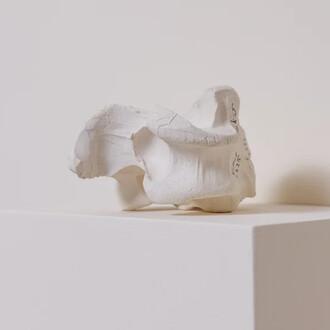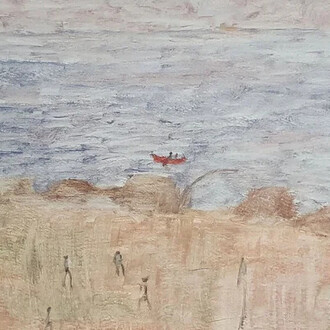Marc Selwyn Fine Art is delighted to present Rodolfo Abularach: A cosmic vision, an exhibiton of one of Latin America’s most significant yet under recognized artists. We are also pleased to announce publication of the first major monograph dedicated to the artist which includes essays by art historian and curator Gavin Delahunty, artist and curator Gabriel Rodríguez Pellecer, and curator Rudy F. Weissenberg. This exhibition is a bicoastal collaboration with David Nolan Gallery, New York, where a simultaneous presentation of Abularach’s work is on view through July 31.
Throughout his six-decade career, Abularach created a fascinating spiritual world filled with images of planetary forms, mandalas, and earthly and psychological portals. His most famous subject was the eye, which he saw as a window into the soul. His interest in the mysteries of the natural world also led him to depict the volcano, an emblem of the artist’s Guatemalan homeland which he saw as a gateway to the inner Earth. Abularach mastered and explored a variety of styles, from hyper realistic to abstract, monochrome to multicolored, esoteric to surreal. He was known for his virtuosity in multiple media, including painting, drawing, and printmaking. This exhibition will highlight the major themes Abularach explored throughout his career and illustrate the evolution of the artist’s imagery from enigmatic circular forms to the human eye in all its possible variations.
A practitioner of meditation and Buddhism, Abularach once described his "eyes" as "a symbol of liberation, ascension, and peace.” In Hinduism and Buddhism, the third eye may represent the ability to go beyond the limitations of the physical senses and access higher realms of consciousness. To Abularach, the eye served as an icon for the multi-dimensional exploration of inner and outer worlds.
In Aparición, 1964-1967 Abularach depicts a circular form hovering over an abstracted horizon. Radiating rings of color evoke both an iris and a glowing celestial body, foreshadowing the artist's later more realistic explorations of the eye as a central and metaphysical motif.
In Centro rosa, 1967, for example, a central pink orb, which might represent an eclipse or other celestial phenomenon, floats over an abstracted mountainous form. This and similar works were influenced by the culture and traditions of the Mayan people and their relationship to the cosmos and the forces of nature. Abularach saw this imagery as “an apparition in a mystical, poetic sense. It is like a light imprisoned…a frontal eye or a black disc, like an eclipse.”
From these abstractions, Abularach’s compositions evolved towards more recognizable ocular imagery. In Túnel - entrada, 1970, for example, a luminous white circular orb rises like the sun over a landscape, the entire image evoking a large human eye. Even more realistic are Abularach’s meticulous ink drawings (Sirena, 1983) with their exquisite cross hatching in razor fine ink pen
Abularach was a classic, a modern, geometric painter; a figurative painter; but above all, he is unclassifiable. He communicated with the firmament and discovered the star we all carry in our faces: the eye. That eye which, when the eyelid is closed, is the entrance to the inner world… There is a unique zeitgeist in Abularach’s paintings—a revisitation of Western and Mesoamerican myths blended with an allusion to Eastern practices, such as meditation, and Western psychedelia. What he produced would levitate and transcend any territory and time period. His works hypnotize; they capture our sight like a pendulum.
(Gabriel Rodríguez Pellecer, “Cosmic Abularach: portrait of the artist as a mystic,” 2025)
His work fluidly intertwines Mesoamerican symbolism, Renaissance precision, and Surrealist anthropomorphism, in addition to expressing spiritual and metaphysical ideals… Abularach once described his “eye” as a symbol of ascension and liberation—a physical organ that nevertheless has the ability to transcend the limits of the human body. Visionary and omniscient, Abularach’s eyes survey vast swathes of art history and visual culture, condensing the artist’s extraordinarily rich range of references into each keenly focused image.
(Gavin Delahunty, “An ocular imagination,” 2025)












